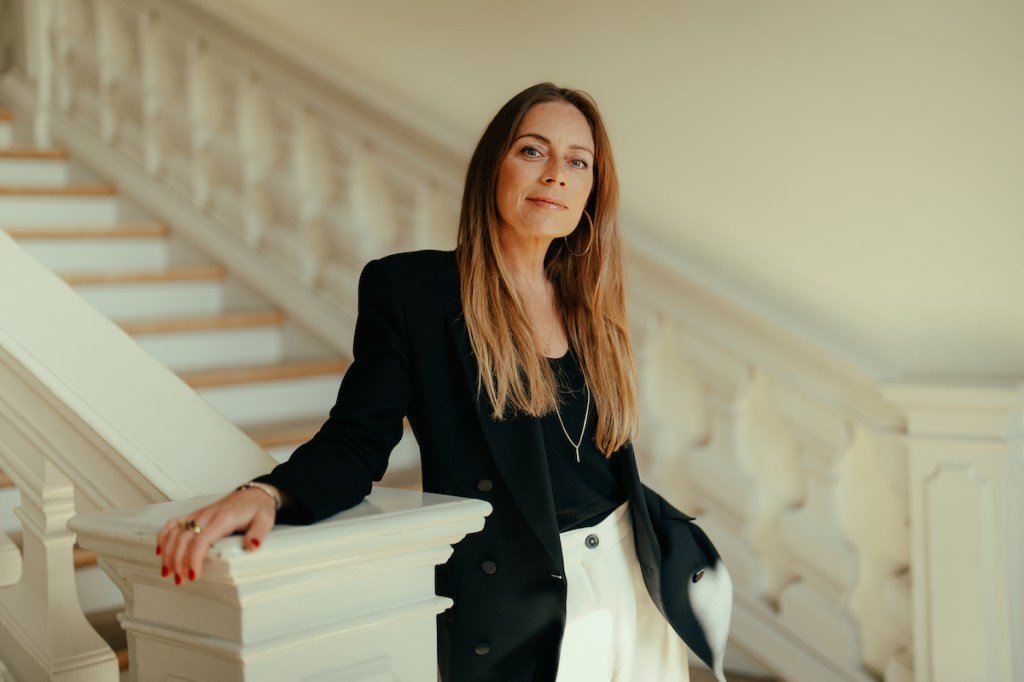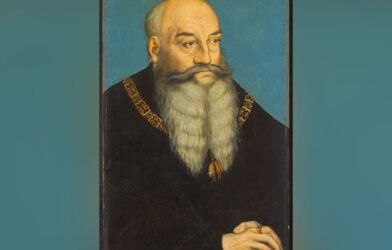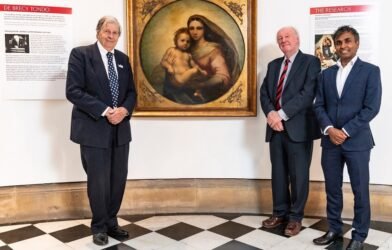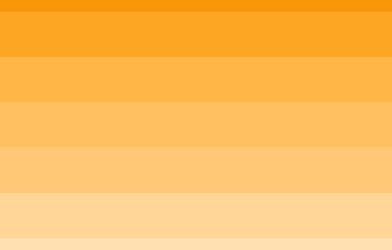CHART in Copenhagen is the leading art fair in the Nordics. Unusually for an art fair, it’s also nonprofit. Founded by five Copenhagen-based galleries in 2013, it is now in its 11th year and has played a vital hand in developing the art market in the region.
In 2022, former gallery director and art advisor Julie Quottrup Silbermman succeeded Nanna Hjortenberg as CHART’s director. She has since been tasked with forging lasting partnerships and making sure the fair receives enough funding so it can keep going while hosting its free public program.
This year, 36 galleries from countries including Norway, Sweden, Finland, and Iceland are taking part from August 29 to September 1.
Silbermman spoke to ARTnews about the obstacles of running a nonprofit fair, encouraging new collectors to buy art, and why CHART bucks the trend of traditional art fair format by scrapping booths.
This interview has been edited lightly for concision and clarity.
ARTnews: What are the challenges of running a nonprofit art fair?
Silbermman: It’s definitely different running a nonprofit art fair compared to a commercial fair. There aren’t many nonprofit fairs we can compare ourselves to. There’s New Art Dealers Alliance New York. Running a nonprofit organization means that every single year, we have to apply for funding, sponsorship, and partnerships, and we apply to the municipality and the government to secure the money to build everything. When spring arrives, I set down a budget with our wishes of what we want to add to the fair. It’s challenging.
CHART takes place at Charlottenborg in the heart of Copenhagen, which serves as the base for Kunsthal Charlottenborg, the Royal Danish Academy of Fine Arts, and CHART’s offices. The building has two courtyards which we use for our free public program. We have about 15 talks throughout the weekend, we have performances, we have music on Friday and Saturday night, and a big architecture competition (CHART Architecture). You don’t need to buy a ticket for these events, which means we need to apply for funding for the public program, which is one of the challenges. Making sure all of these things—the events, parties, talks, performances, and the happenings around the fair—fit inside our budget is not easy. The galleries pay to participate at the fair but it’s not much when you compare the fee to other art fairs. The money basically only just covers the whole event’s running costs and the staff.
When you look at the economic situation right now all around in the world, I would be lying if I said organizing the event wasn’t tough. With some partners, I’m lucky to sign a three-year contract, which makes things a little calmer. Even though we are privileged in Denmark and have all these funds that support the art industry, the competition for the financing is fierce, so we cannot just reply on grants.
Why is CHART nonprofit?
It is a way of giving back to the galleries, giving back to the community, to the Nordics. We should not be earning money by running CHART. We want to invest in the art community in throwing the fair.
Do you see CHART’s ethos as a type of antidote to the super commercially–minded, bigger art fairs?
Antidote is a very strong word. Art Basel and Frieze are extremely established art fairs. It’s hard to compare CHART to them. We do something else for the art community and for the Nordic art scene. We are trying to engage a broader audience – the public program will hopefully draw people in so they can listen to free talks and be part of the music and nightlife. Hopefully it will inspire people. We want to make it as open and inclusive as possible.
You’re probably asked this a lot, but why doesn’t CHART have booths?
We really try to challenge the traditional art fair format. Walking up and down long aisles with booths on both sides can be rather exhausting. At CHART, we’re using the existing infrastructure and architecture of Kunsthal Charlottenborg. This makes the fair more fluent. In a way, it makes it feel like one big contemporary art exhibition. It’s like floating in and out between the galleries. It also helps galleries to collaborate with one another. Some of the rooms are taken over by one gallery, but some are taken over by three galleries. Collectors and visitors will start talking to one gallerist, then they’ll look over to a neighboring gallerist and talk to them. It’s about starting dialogue, trying to help one another, supporting one another, and making it more open.
How difficult is it to select participating galleries?
We are the only Nordic art fair. We try to select the strongest galleries within the Nordics by invitation. If there are new exciting galleries, we try to bring them in. This doesn’t mean the artists on show are only from the Nordics, though – we have artists from all over the world. In total we have 36 galleries – I would have loved to show a few more but sadly we don’t have the space.
How would you describe the Nordic art scene?
The art industry is really strong in the Nordic countries. We are very inclusive, diverse, and innovative. I also see it as very international. A lot of the galleries participating at CHART are also taking part in art fairs all over the world. The art scene has become so international. As for collectors, we have a lot of younger collectors. There is a growing interest, people are saving money to buy unique art. The gallery scene in Copenhagen is vibrant. It is not trying to emulate New York or Paris—the Nordic art world is its own kind of ecosystem with its own identity.
How significant is the 10-year anniversary of CHART Architecture?
It is really significant. We have changed it quite a lot. When the competition started out, it was an open call for students from the Royal Academy. And then when I started as director last year, I changed it to newly established architectural firms. This year, you always want to do something new. When you’re applying for funding from these big foundations in Denmark, they’re always looking for something new. I’m working closely with CHART’s team and the board to make sure we’re always offering something novel and exciting. This year the theme is “New Nordic Architecture” and it is rooted in sustainability, lightness, and inclusion. The winner is a submission called Breeze, which was chosen by a jury of three people. It will be erected in the courtyard space – it has folding walls that bend in and it’s covered in the sails from a Danish ship. Everything is reused and can be reused afterwards.

Breeze, by Emil Dupuis Bernild, Mikkel Harboe Wolff, Jonas Sarantaris & Shwan Soran Ali, selected as winner for the 2024 CHART Architecture Prize.
What is Start Collecting with CHART?
Start Collecting with CHART is returning for 2024 after we introduced it last year. It is a curated selling exhibition featuring works priced below $3,000. It’s part of our plan to open up the conversation around collecting and to get more people involved in buying art. Each of the leading galleries exhibiting at CHART is invited to participate in the program with one artist from their roster. It’s still a considerable sum to part with but we want to show that unique pieces by established artists can be affordable. There are of course works by emerging artists up for grabs, including sculpture, prints, paintings, photos, lots of different media.
You recently joined the Gallery Climate Coalition (GCC). How has it changed your approach?
It’s a process. We’ve been talking to the coalition back and forth for quite some time. For me, it’s vital that we do it properly and become an active member. When you look at the list of members, many of them are not active. Every year we send in the numbers showing how many flights we booked, how much we printed, how sustainable we are, and so on. We also want to encourage galleries to be part of the coalition, to educate them. We set up online meetings with the GCC and galleries so they can find solutions to be more sustainable. CHART is printing less, we’re doing more things online so people don’t have to travel as much, we are prioritizing ethical partnerships. Our transport partner is reaching out to all the galleries to combine travel. We distinguish ourselves from other art fairs by limiting the geographical area from which invited galleries must travel to attend. This reduces the overall air traffic when transporting artworks, gallery staff, and other immediate stakeholders to the fair.










